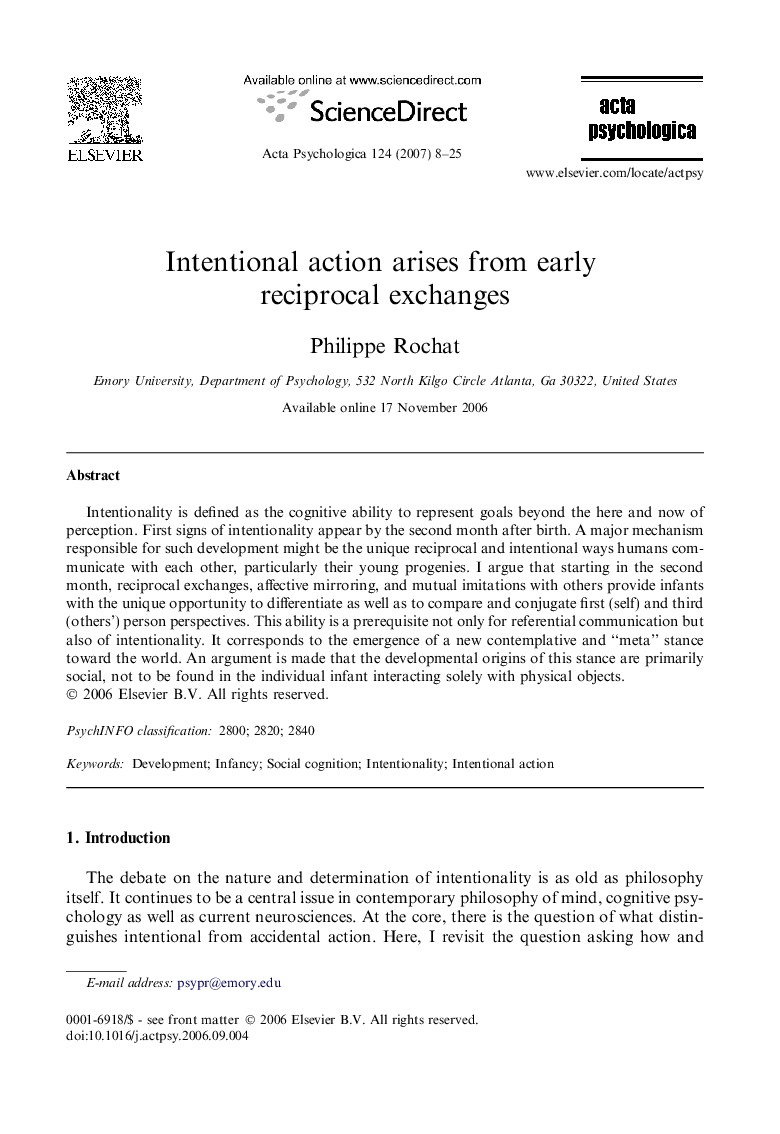| Article ID | Journal | Published Year | Pages | File Type |
|---|---|---|---|---|
| 920588 | Acta Psychologica | 2007 | 18 Pages |
Intentionality is defined as the cognitive ability to represent goals beyond the here and now of perception. First signs of intentionality appear by the second month after birth. A major mechanism responsible for such development might be the unique reciprocal and intentional ways humans communicate with each other, particularly their young progenies. I argue that starting in the second month, reciprocal exchanges, affective mirroring, and mutual imitations with others provide infants with the unique opportunity to differentiate as well as to compare and conjugate first (self) and third (others’) person perspectives. This ability is a prerequisite not only for referential communication but also of intentionality. It corresponds to the emergence of a new contemplative and “meta” stance toward the world. An argument is made that the developmental origins of this stance are primarily social, not to be found in the individual infant interacting solely with physical objects.
